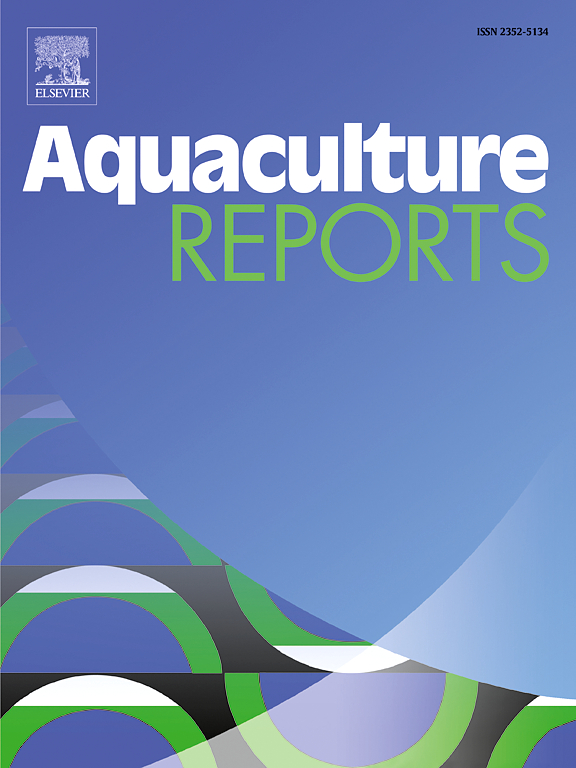Dual mechanisms of G3 against Vibrio parahaemolyticus in shrimp aquaculture
IF 3.2
2区 农林科学
Q1 FISHERIES
引用次数: 0
Abstract
Bacterial diseases mainly caused by Vibrio species pose a serious threat to shrimp aquaculture and lead to the sudden mass mortalities and huge economics losses. The unfavorable side effects and emergence of superbugs in traditional antibiotic treatment makes development of excellent antibacterial agents especially urgent. Antimicrobial peptides (AMPs), which usually have high antibacterial activity and low potential to induce bacterial resistance, are considered as the promising alternatives to conventional antibiotics. However, their anti-Vibrio mechanisms have not yet reached a consensus. In this study, a pathogenic Vibrio strain was isolated from the cultured shrimp and was identified as Vibrio parahaemolyticus UPC-1 (V. Parahaemolyticus UPC-1). Studies showed that G3 efficiently protected shrimp from V. Parahaemolyticus UPC-1 infection through two independent ways. In one way, G3 balanced the bacterial community of shrimp gut by selectively killing the pathogenic Vibrio bacteria. In the other way, G3 markedly reduced the robust inflammation effects induced by Vibrio infection. Such efficient anti-Vibrio activity of G3 endows it great potential in the treatment of Vibrio infections in shrimp aquaculture.
求助全文
约1分钟内获得全文
求助全文
来源期刊

Aquaculture Reports
Agricultural and Biological Sciences-Animal Science and Zoology
CiteScore
5.90
自引率
8.10%
发文量
469
审稿时长
77 days
期刊介绍:
Aquaculture Reports will publish original research papers and reviews documenting outstanding science with a regional context and focus, answering the need for high quality information on novel species, systems and regions in emerging areas of aquaculture research and development, such as integrated multi-trophic aquaculture, urban aquaculture, ornamental, unfed aquaculture, offshore aquaculture and others. Papers having industry research as priority and encompassing product development research or current industry practice are encouraged.
 求助内容:
求助内容: 应助结果提醒方式:
应助结果提醒方式:


